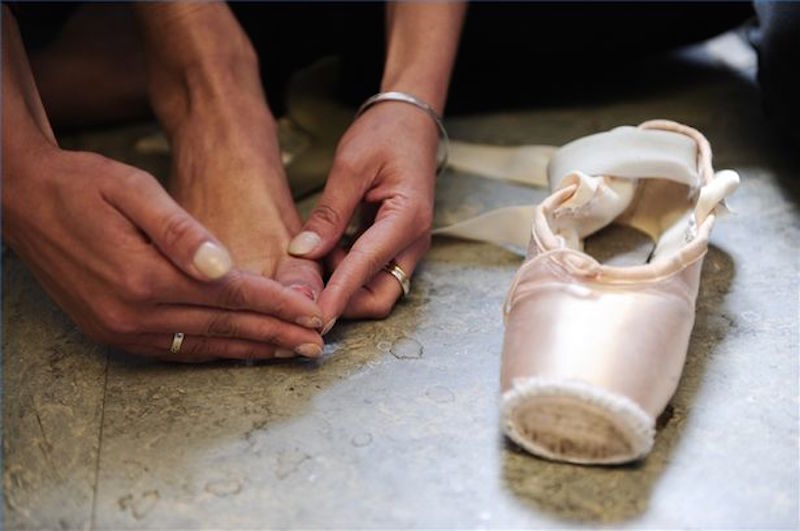Life Imitating Art Imitating Pain
Chrysta Brown
 “Ladies, I don’t know who told you that dance was easy.” I use an admittedly unnecessary amount of force on the pause button on my computer. “You were misled.”
“Ladies, I don’t know who told you that dance was easy.” I use an admittedly unnecessary amount of force on the pause button on my computer. “You were misled.”
That, it seems, is how corrections are going to go today. I go back and forth with my intermediate students. Sometimes they need to calm down because “we are only doing pliès” and other times “pliès are the hardest thing we’re going to do all week.” I don’t think there is any logic or pattern to which days get which corrections. This particular class falls after a series of bad days. I am both pressed and crushed, persecuted and abandoned, struck down and one best-laid plan away from destruction, and so, in a "life imitating art imitating life" sort of way, pliès are hard today.
“You want to know what else is hard?” I continue.
“Life,” they answer in unison, and I am equally amused and concerned that I have conditioned them to answer this way. I wonder if I need to go away to reset, change my attitude, and come back with a more positive sensibility. Then maybe I can be one of those “Your pliè should feel like a rainbow glittered butterfly freely floating on waves of wind,” sort of teachers and less the “Dance is hard. Accept, move on, and point your feet” person that I am in and out of class.
Though the din of their aching muscles will prevent them from believing it, I am somewhat sympathetic to their plight. In fact, I give myself this same pep talk. A couple of days ago, it was me at the barre in a ballet class dripping with sweat and ready to clap, curtsey, and thank the instructor for an excellent class. This was after pliès (and it is here that I should probably mention that pliès are the first exercise in a ballet class).
“We’re going to do that again,” the instructor responded. She told us why and what to change. “This,” I thought to myself as the music began, “maybe the last class I ever take.” I don’t mean that in a “live every moment as if it is your last,” bumper sticker sort of way. It was more a realization that there was a pretty good chance that I was going to pass out before the class ended. I focused on breathing as my right arm floated out, in, up, and open. My hips and knees and ankles cracked harmoniously. My muscles joined and sang long, minor-keyed groans with each action, and then something wonderful happened: I did not break.
There is an Agnes DeMille quote that I am, in Sunday school fashion, trying to write on the door my heart. “Ballet technique is arbitrary and very difficult. It never becomes easy—it becomes possible.” Of course, I want to protect my students from pain. There are moments when I will go to great lengths to avoid it, but my dislike for discomfort doesn't change the fact that it exists.
The other day, one of my students raised her hand in the middle of class and announced that stretching hurt her. “Mhmm…” I nodded, and there was nothing more to say than that. Ballet is hard, demanding, and it hurts. The only way to get the flexibility and strength that dance requires, however, is to endure the pain, and the dancer that runs from it never sees anything become possible. Sometimes there are instances in which the cure for pain is to let yourself experience pain for just a little while longer. If you can ride it, out you just might surprise yourself with the realization that you can bend without breaking, after all.